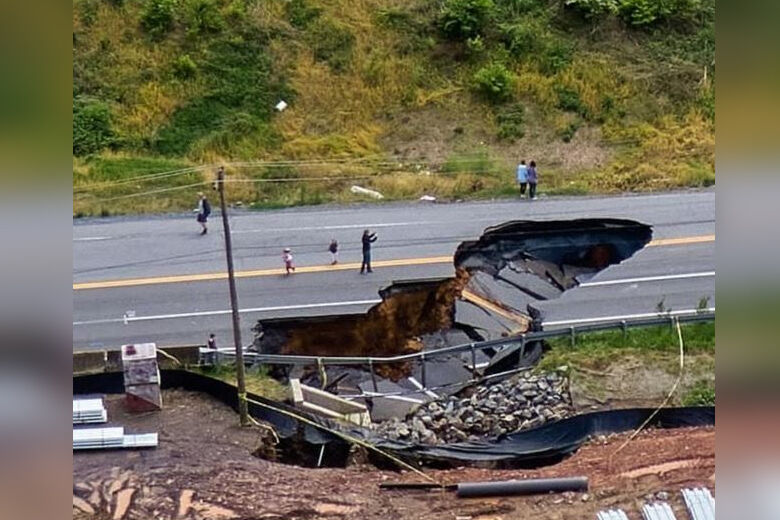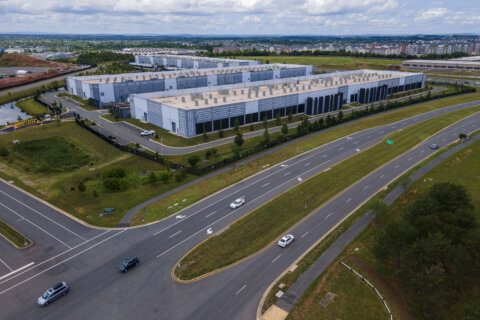Officials in Frederick, Maryland, are searching for contractors to patch a large and growing sinkhole that opened up last week along Monocacy Boulevard, causing a waterline break and collapsing part of the road.
There is no timeline or estimated costs for the repairs yet, said Tracy Coleman, deputy director of the Department of Public Works for the City of Frederick. Because crews have not yet been able to find the “throat” of the sinkhole, it could still continue to grow, she said.
“It is concerning that, you know, if there’s any heavy rainfall or stormwater runoff, it can continue to erode the soil around the sinkhole area,” Coleman told WTOP.
Coleman said the city has consulted with geotechnical professionals as well as a geologist with the State Highway Administration on different courses of action.
The city is now putting together a scope of work on the project and will solicit bids from contractors on making the repairs and restoring the roadway, she said.

The sinkhole first appeared May 4 in a drainage swale next to the road causing road crews to close one lane on westbound Monocacy Boulevard between South Street and the ramp to U.S. 70.
But over the next few days, the sinkhole grew and eventually caused a waterline break, resulting in the closure of Monocacy Boulevard from U.S. 70 at the new Royal Farms to East South Street.
Coleman said the sinkhole formed under an existing large water main, which eroded support for the main.
“With the weight of the pavement on top and the other soil that was on top of the water main, it was too much for the water main to take, so it broke,” she said.
The rupture of the water main then caused the sinkhole growing even larger, she said.
The waterline break disrupted some water service nearby, which was restored relatively quickly, she said.
The city of Frederick lies over what’s known as Karst terrain, which is prone to developing sinkholes.
Karst terrain is an area of irregular limestone or other carbonate rock that develops voids or fissures underground.
“What happened in this case is there was a lot of surface water that collected in one single area, and it drained through and it basically opened up a void, or it made its way to a void that was underground and just continued to pull the soil that was above into that void,” she said.
WTOP’s Andrew Alsbrooks contributed to this report.








